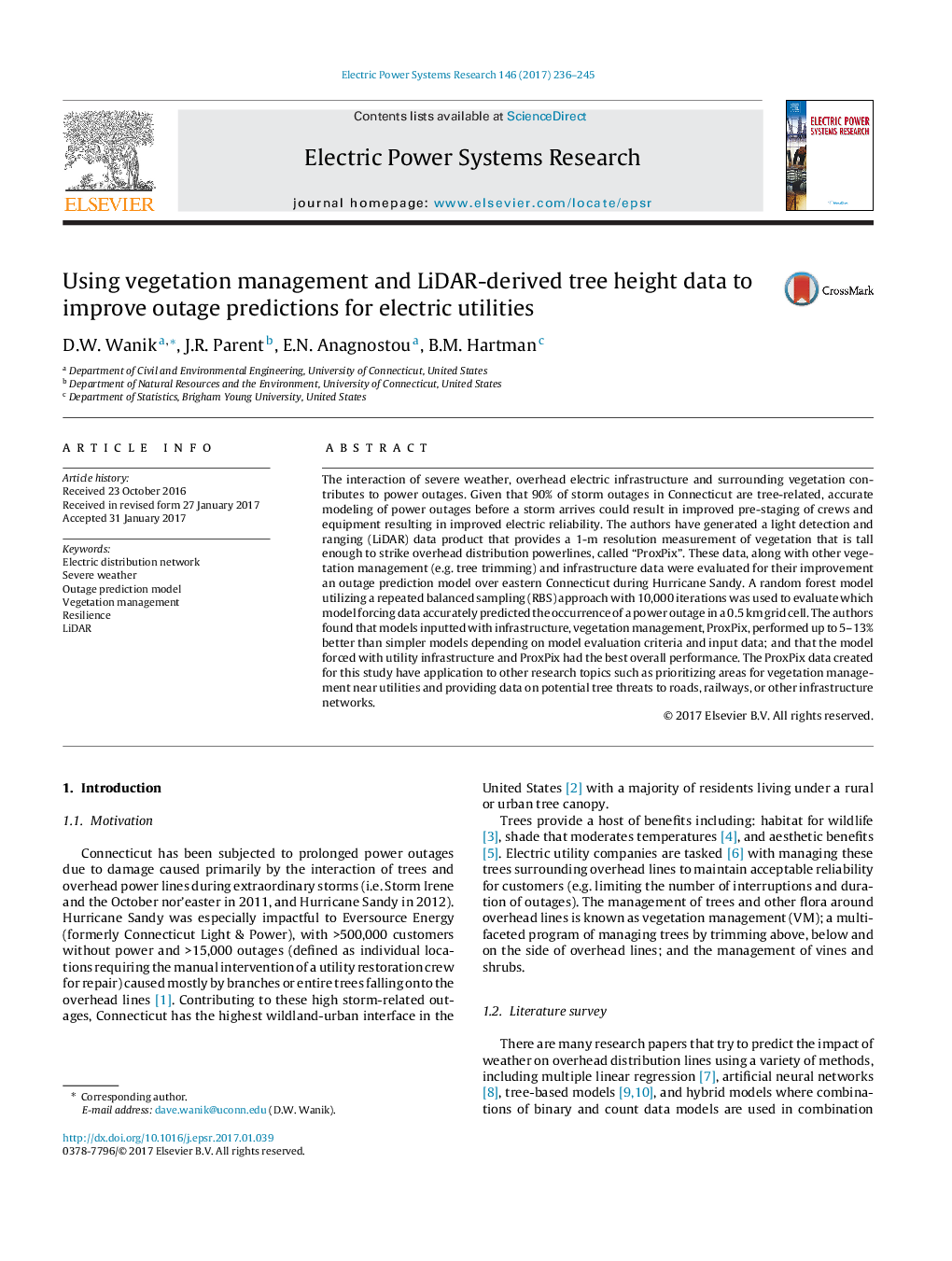| Article ID | Journal | Published Year | Pages | File Type |
|---|---|---|---|---|
| 5001124 | Electric Power Systems Research | 2017 | 10 Pages |
Abstract
The interaction of severe weather, overhead electric infrastructure and surrounding vegetation contributes to power outages. Given that 90% of storm outages in Connecticut are tree-related, accurate modeling of power outages before a storm arrives could result in improved pre-staging of crews and equipment resulting in improved electric reliability. The authors have generated a light detection and ranging (LiDAR) data product that provides a 1-m resolution measurement of vegetation that is tall enough to strike overhead distribution powerlines, called “ProxPix”. These data, along with other vegetation management (e.g. tree trimming) and infrastructure data were evaluated for their improvement an outage prediction model over eastern Connecticut during Hurricane Sandy. A random forest model utilizing a repeated balanced sampling (RBS) approach with 10,000 iterations was used to evaluate which model forcing data accurately predicted the occurrence of a power outage in a 0.5Â km grid cell. The authors found that models inputted with infrastructure, vegetation management, ProxPix, performed up to 5-13% better than simpler models depending on model evaluation criteria and input data; and that the model forced with utility infrastructure and ProxPix had the best overall performance. The ProxPix data created for this study have application to other research topics such as prioritizing areas for vegetation management near utilities and providing data on potential tree threats to roads, railways, or other infrastructure networks.
Related Topics
Physical Sciences and Engineering
Energy
Energy Engineering and Power Technology
Authors
D.W. Wanik, J.R. Parent, E.N. Anagnostou, B.M. Hartman,
